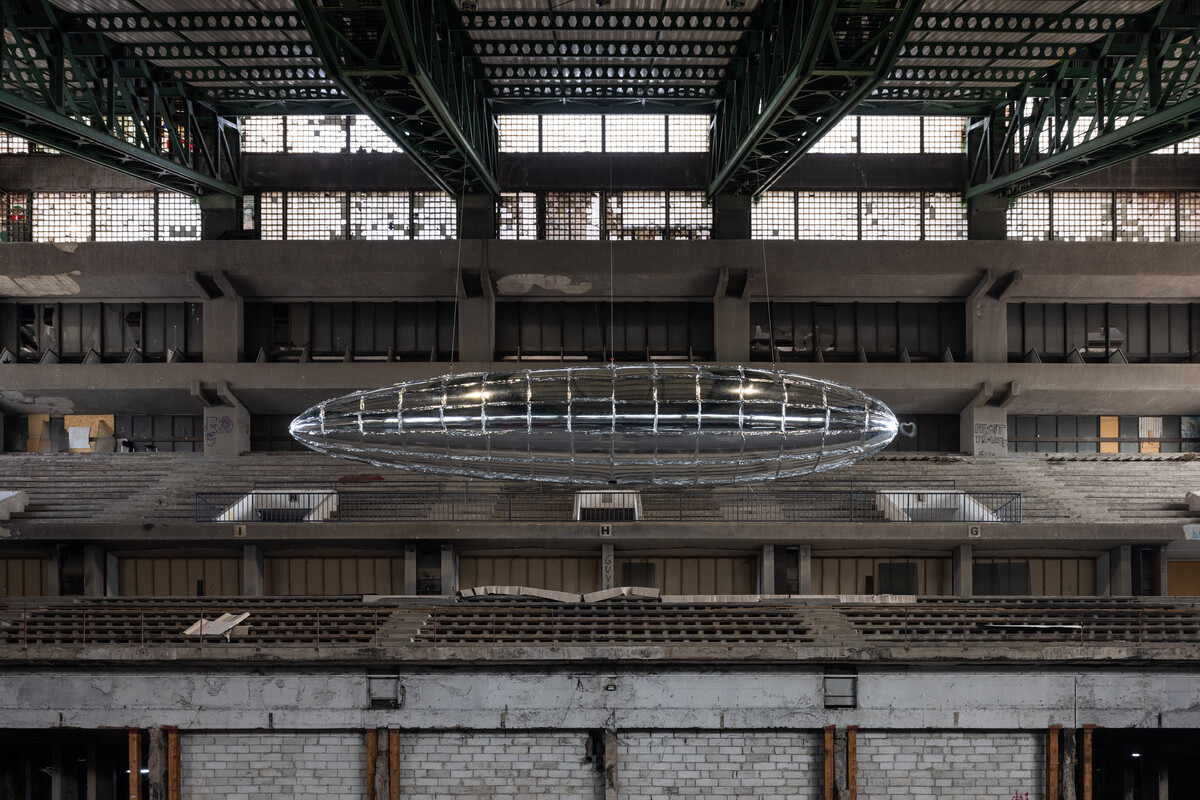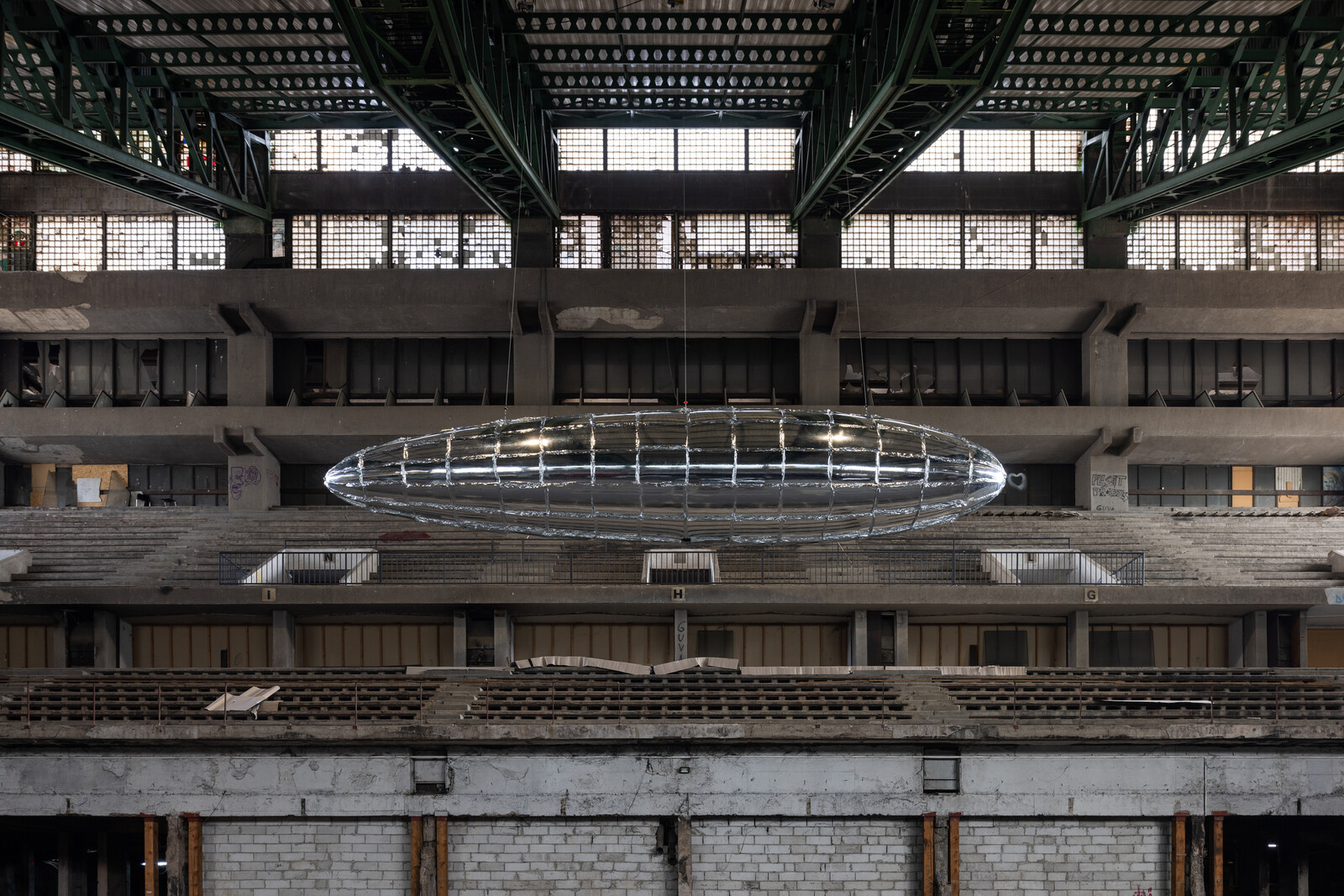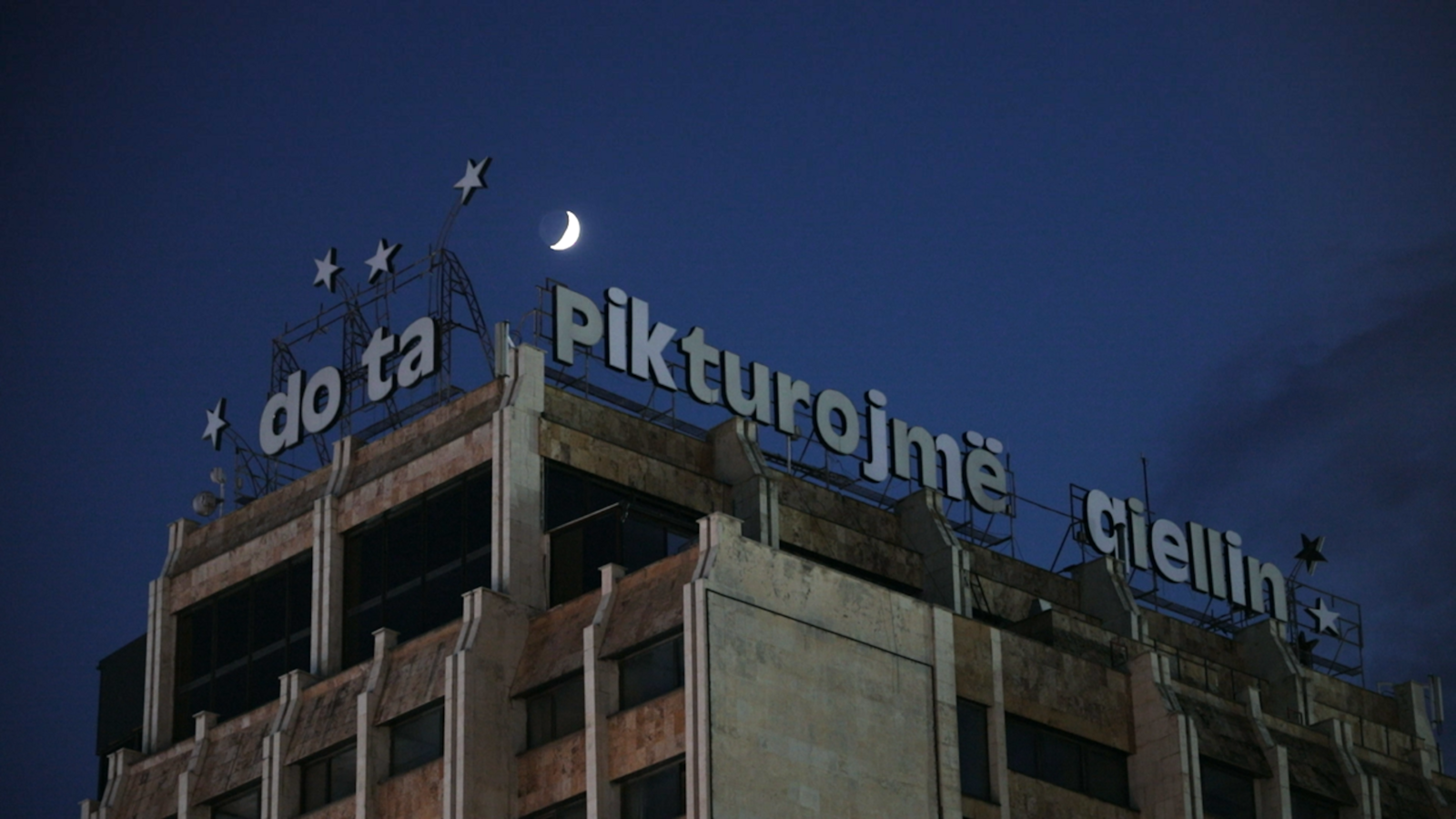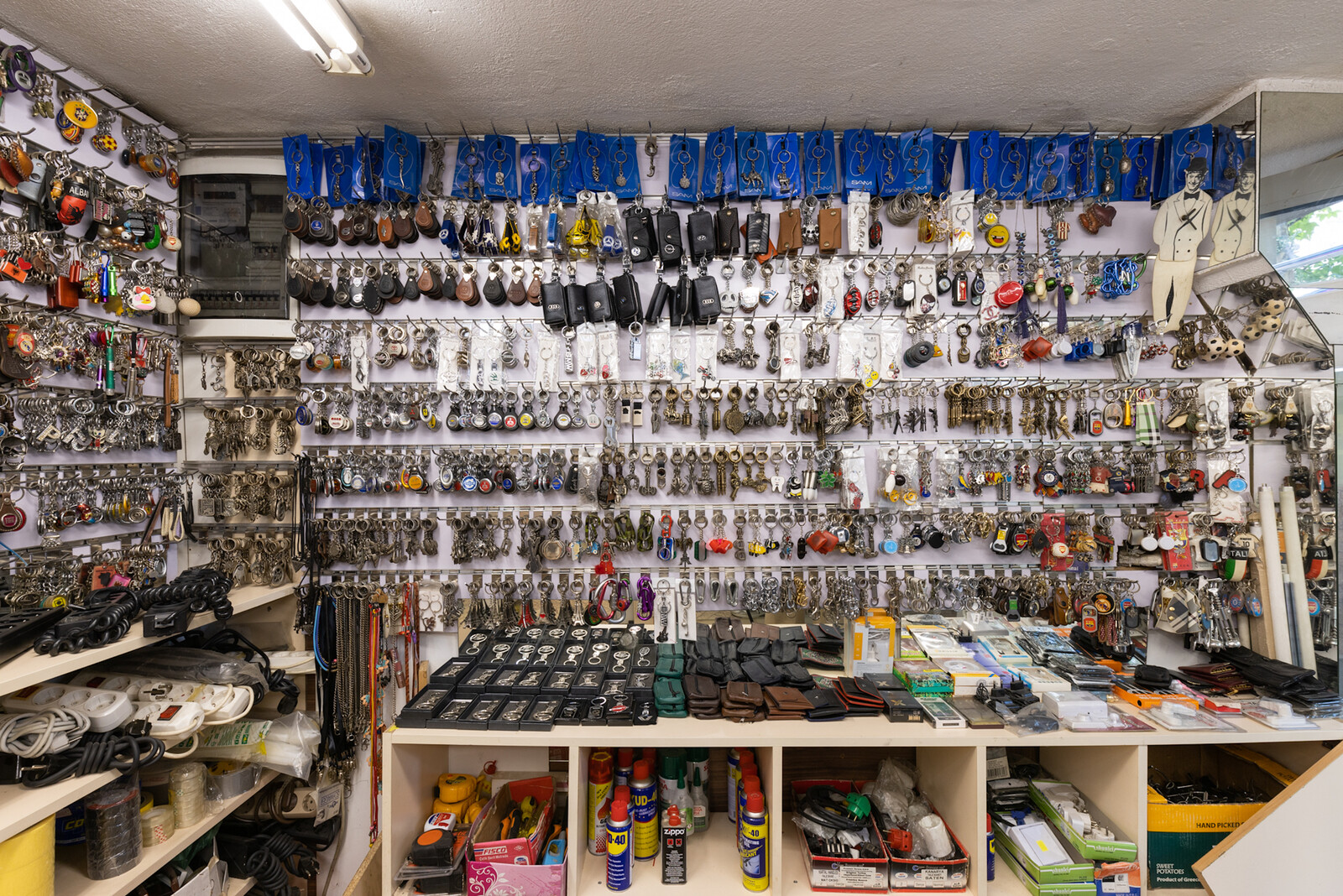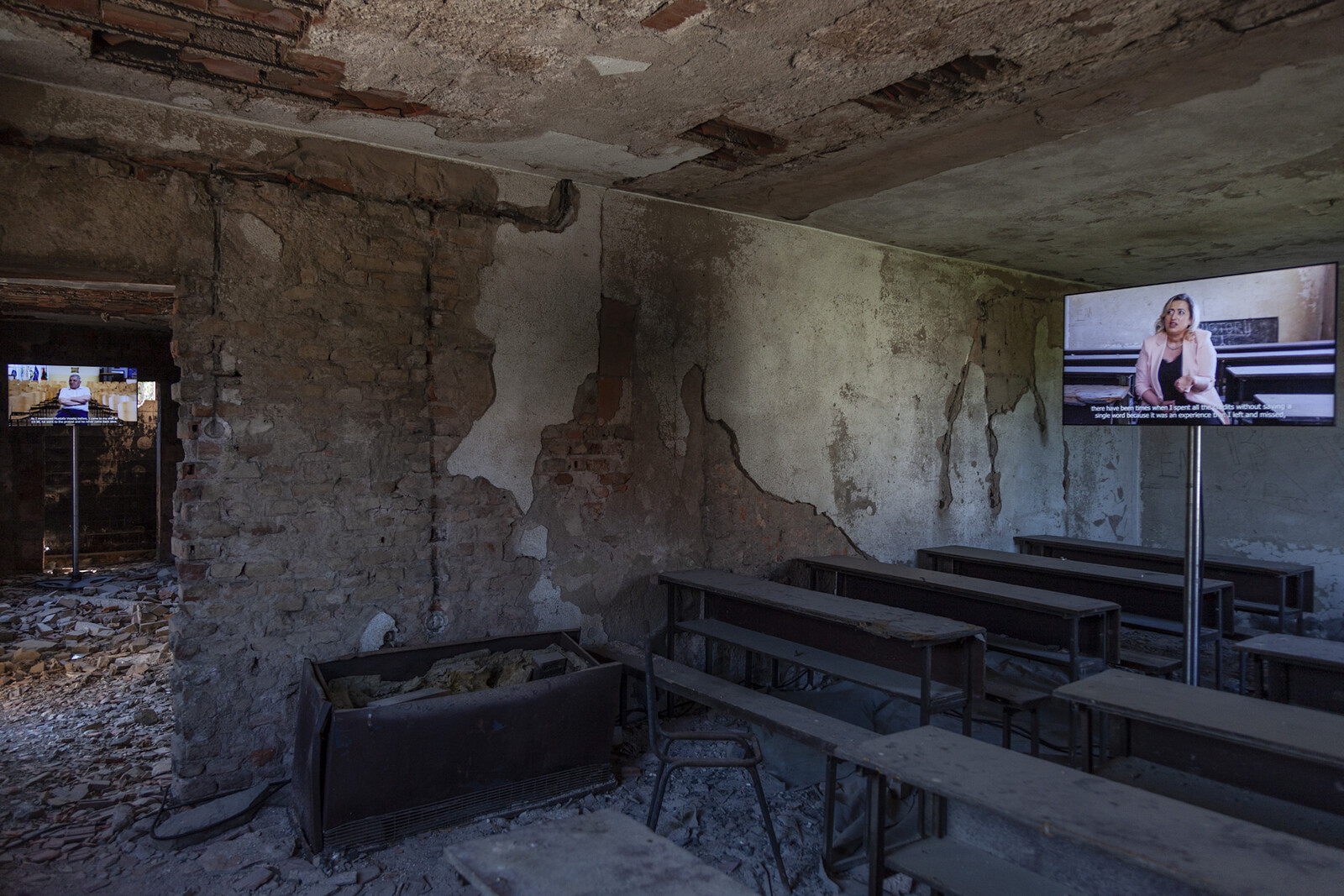July 22–October 30, 2022
For its 14th edition, the nomadic European biennial Manifesta has taken up temporary residence in various cultural institutions and derelict spaces in and around Pristina, the capital of Kosovo, where creative mediator Catherine Nichols invited artists and practitioners to explore modes of storytelling across cultures. As a contested nation state, Kosovo embodies many of the most pressing and complex issues facing society today. When is a country a country? How many people have to say it is for it to be? Who has the authority to declare a territory as a nation? Does the population need to be homogenous? Who is nationalism good for? How can we all live together and be free? Roaming the city in search of the exhibitions and “artistic interventions”—by 102 artists in 25 locations, from an Ottoman-era hammam to a former brick factory—I attempted to plot pieces of the puzzle into a coherent picture. Interacting with locals in Pristina was inevitable, both to find the far-flung (and often vaguely signposted) locations and to glean how the tumultuous, not-so-distant past led to the complex present.
The main exhibition, titled “The Grand Scheme of Things,” is hosted on seven floors of the Grand Hotel Pristina, a decadent specter of a structure that has hardly changed since it opened in 1978. Each floor is dedicated to a theme—transition, migration, water, capital, love, ecology, and speculation—expressed in everything from photographs, paintings, and sculptures to engaging films and immersive installations. Among these are the soft dolls of Dardan Zhegrova’s Your enthusiasm to tell a story (2015–22), which invite you to lay down, put your ear on their hearts, and hear the artist whisper intimate poetry. In embroidered tapestries titled The Frequency of Frankness (2012–22), Jakup Ferri depicts a magical universe where various species communicate and care for each other. It is worth making the trip to Pristina just to see the engaging and heartfelt work of artists from the Balkans, who comprise more than half of the exhibition.
The once five-star Grand Hotel is a focal point in the city—tantamount to a national monument as a longtime gathering place for diplomats, war criminals, and pop stars—despite losing its stars one by one as it has deteriorated physically. It is like a Wes Anderson film set, still offering surreal lodgings on two floors, and a guest review reads: “Probably the worst I have ever been at.” (Although I would vote for Holiday Inn Sarajevo, at least when I stayed there in 2000, which has a similar, if more violent, history and some of the same ghosts.) The suite where Yugoslavian leader Josip Broz Tito stayed—with its original green leather furniture, red carpet and curtains, and warped dark wood—is displayed as part of The Suit (2016), Majlinda Hoxha’s documentation of the hotel as a repository of history. Serbian mobster Željko Ražnatović (aka Arkan) and his gunmen later seized the dictator’s quarters; he was assassinated in another hotel, Crowne Plaza Belgrade, in 2000. The hotel was fully booked when NATO ground troops arrived in the city in June 1999, after the airstrikes on Serbia that put a stop to a decade of torture and genocide. The general manager, Rrahim Fazliu, has described the hotel as a “mirror of Kosovo.”1
Like territories, buildings change occupants over time. Fight Club, a training center for kick boxers, inhabits the hotel mezzanine. The basement, once used as an interrogation center by the Serbian paramilitary thugs, harbors a health club as well as an installation of projections and sculptures by Off Season Collective, which emerged from a residency program run by architect Elian Stefa in the early stages of the pandemic. These include Fill in the Blanks, an incantation on mass tourism by Anna Baranowski and Vlad Brateanu, which portrays a seaside resort near Vlorë, Albania, where the metal supports for beach umbrellas are invoked as a hallucinatory reflection of Walter de Maria’s Lightning Field (1977), alluding to the out-of-context replicas of iconic monuments found around the world: “We are passengers before we are tourists, privileged able bodies moving through non-spaces, forming lines at the airport to reach the hotel room, to the postcard landscape.” The Pristina police headquarters has a Statue of Liberty on its roof, left behind by the hotel for which the illegal structure was constructed. The 2021 film Legacy, by Baranowski, flashes images of historical events and the remnants left behind, including the ubiquitous bunkers dotting the Albanian landscape like mushrooms, with the postscript: “Neither nature nor time make distinctions between relics of bygone times.”
The biennial fills in the blanks for visitors to Pristina by opening and contextualizing significant spaces forgotten in the flurry of daily life. On a hill at the periphery of town, in the burnt shell of the Hertica School House, the NGO ETEA presents videos of moving interviews with former students and teachers on screens set up among the desks, surrounded by shards of broken glass and rubble. The unfinished home was offered by Mehmet Aliu-Hertica to students and staff of the Sami Frashëri High School so they could finish their education in secret after 1990, when the Serbian regime excluded ethnic Albanians from official institutions. One former student recalled being told to take different routes to school and not to walk in groups to avoid being discovered by Serbian soldiers. A classmate went missing for two days after being told that he would be forced to eat his notebook if he was caught again.
Independence means little when you can’t visit most other countries. The median age of Kosovans is 30, the generation that grew up during the post-Yugoslavia turmoil of the 1990s, and today their biggest concerns seem to be corruption, pollution, and—perhaps most of all—a feeling of isolation. In his video SIN (2004), Driton Hajredini, a Muslim, goes to a Catholic church and asks the priest whether simply being born in Kosovo is a sin punishable by exclusion of one’s official identity and exile within one’s own borders. Even when a visa is possible, the process is often prohibitive and expensive. Applying for a visa to visit Portugal, I was told, entails a trip to Bulgaria. For her intervention Swap keys (2022) Spanish artist Luz Broto has facilitated a key swap at a locksmith shop, where people make and exchange the copies and addresses as invitations to visit each other. Yet for Kosovars paired with Spaniards, of which there were many, the whole exercise is theoretical given they are not allowed to enter Spain.
Then there are those who do not want a state, just freedom from definition or borders of any kind. Bosnian Roma artist Selma Selman conveyed the sentiment in her performance You Have No Idea (2022), in front of the National Gallery of Art: confronting onlookers, she repeated the titular phrase in a conversational manner that evolved into a crescendo of screams. A plea to stop trying to understand or confer an identity on those who do not wish to be labeled, it was emotionally cathartic and to the point. In the Grand Hotel, Selman’s video Mercedes Matrix (2019) follows her family taking apart a Mercedes, as if to dismantle a Romani stereotype. The Romani language was an unwritten until very recently, its traditions handed down through the spoken word, so there is no official history book. The livelihood of the nomadic Roma tribes, such as metalworkers, has been destroyed by confinement within nation states. Modern society really has no idea what to do with populations that don’t fit into normative or geographic boundaries, so it constructs equally forced categories to deal with them. The reality is that we are all unruly.
Borders are like book covers for territories. The titles and narratives depend, of course, on who is telling the tale. At the Palace of Youth and Sports, Korean artist Lee Bul’s dazzling blimp, Willing to Be Vulnerable – Metalized Balloon V4 (2015–20), invokes both the failure of utopian ideals and the possibility of salvation in the face of delusion. Suspended in the voluminous belly of the parking garage, it is like a shimmery fish swallowed by the brutalist concrete building, its gargantuan exoskeleton resembling that of a whale. One might imagine Moby-Dick (1851) and its protagonist, Ahab, as an allegory for Kosovo. A recent news item, briefly noted in the international press, also serves as a succinct metaphor for the current state of global society: a Russian-made plane owned by an American company operated by a Ukrainian carrier transporting nearly 12 tons of explosives sold by Serbia to Bangladesh crashed in a remote area of northern Greece, burning and detonating on the ground for two hours, killing the entire crew of course. The language of nationalism and human rights cloaks the bigger currents of power politics and alliances, with smaller players swept up in its swells, and the exigencies of conflict are what determine destinies.
The context plays an essential part in the art exhibitions. At the Museum of Kosovo, housed in a grand Austro-Hungarian palace that was once a military HQ, a permanent vitrine displaying a white cowboy hat, gold brooches, and a trophy atop an American flag—surrounded by weapons and other paraphernalia associated with independence—is dedicated to a national hero: “Some relics of the former Secretary of State Madeleine Albright!” The original collection of the museum was spirited away to Belgrade in the late 1990s and never returned. In a speech from the steps of the museum, Prime Minister Albin Kurti expressed the hope that the country’s choice as site of the European biennial would confer legitimacy to its formal application to the EU, planned by the end of the year. Yet it is possible that the invasion of Ukraine will motivate Europe to recognize Kosovo as a country. The Greek prime minister, Kyriakos Mitsotakis, has called for the urgent EU integration of the six Western Balkans states—including Bosnia, Serbia, Montenegro, Albania, and North Macedonia—remarkable considering the nationalist furor in Greece over the latter’s name not so long ago.2
Stories never really end, and the narratives most always transform over time. On Sunday the city was quiet, nearly bereft of international art world visitors. At the Centre for Narrative Practice, a newly established community and educational hub in the former Hivzi Sylejmani Library, an artist collective from the nearby town Fushë Kosova discussed the problem of having to name themselves and issues of funding. I slipped into the back door of the former Gërmia Department Store to solve the mystery of Above Everyone (2022), a house built on the rooftop by artist Alban Muja, a humorous response to the lack of affordable property after the downfall of Socialism. The windows are lit at night, and rumor had it that someone is living there. I was discovered by an employee of the Ministry of Infrastructure, the current occupant of the building, who kindly escorted me upstairs, where I found an empty shell with quaint curtains in the windows.
Arriving at the Grand Hotel, I heard the sounds of music coming from the mezzanine, where someone was playing a rendition of “Hava Nagila” [Let’s Rejoice] on the recently repaired grand piano. The unofficial mascots of Manifesta 14 are the stray dogs of the city. A hotel clerk told me that lots of people throw rocks at them because they are afraid, so the dogs, fearful in turn, have become aggressive. Artist Petrit Halilaj has revived the fallen stars and letters from the old sign atop the Grand Hotel, adding new letters so it reads When the sun goes away, we paint the sky (2022). Inspired by a phrase in an essay written by a 12-year-old girl, it is a brilliant invitation to imagine a brighter collective future.
Yet the most effective and emblematic artistic intervention may be Europe Without Monuments (2022) in Mitrovica, a contested city not far from Pristina, where the Ibër river divides the Serbian and Albanian communities to the north and south respectively. In the water next to the central bridge, patrolled by NATO peacekeeping forces, Ukrainian artist Stanislava Pinchuk has installed a skeletal deconstructed version of Bogdan Bogdanović’s 1973 Monument to Fallen Miners, a massive temple-like portal built atop a hill in memory of those who fell in a revolt against German occupation of the Trepča mines during WWII. Farther down the river, artist Piers Greville recruited kids from both sides to create a human bridge by swimming against the currents, in the performance What Is Here (2022,) a feat documented in a video at the Grand Hotel. The whole project is the brainchild of curator Petrit Abazi, an Australian who was born in the city, and local officials said that such a collaboration would not have been possible without the mediation of an international organization. In the evening, as the sun goes down and temperatures cool, the structure comes alive as children and dogs alike slosh into the water to play around it. I walked uphill just before sunset led by a brave little stray dog, who sauntered through the monument’s columns and continued down the other side into the trees while I took in the expansive view—and there was no sign of a division from up there. The conclusion to this story: Manifesta is what an international biennial should be, a show reflecting its context and transforming it in turn.
Andrew Higgins, “Not the Worst Hotel in the World, Perhaps, But ‘the World is Very Big,’” The New York Times (March 1, 2018), https://www.nytimes.com/2018/03/01/world/europe/kosovo-grand-hotel.html.
“Plane carrying munitions crashes in Greece killing all onboard,” The Guardian, July 17, 2022, https://www.theguardian.com/world/2022/jul/16/aircraft-carrying-dangerous-cargo-crashes-in-northern-greece; “Greek PM says EU must integrate Western Balkans by 2033 -Politico,” Reuters, June 10, 2022, https://www.reuters.com/world/europe/greek-pm-says-eu-must-integrate-western-balkans-by-2033-politico-2022-06-10/.
